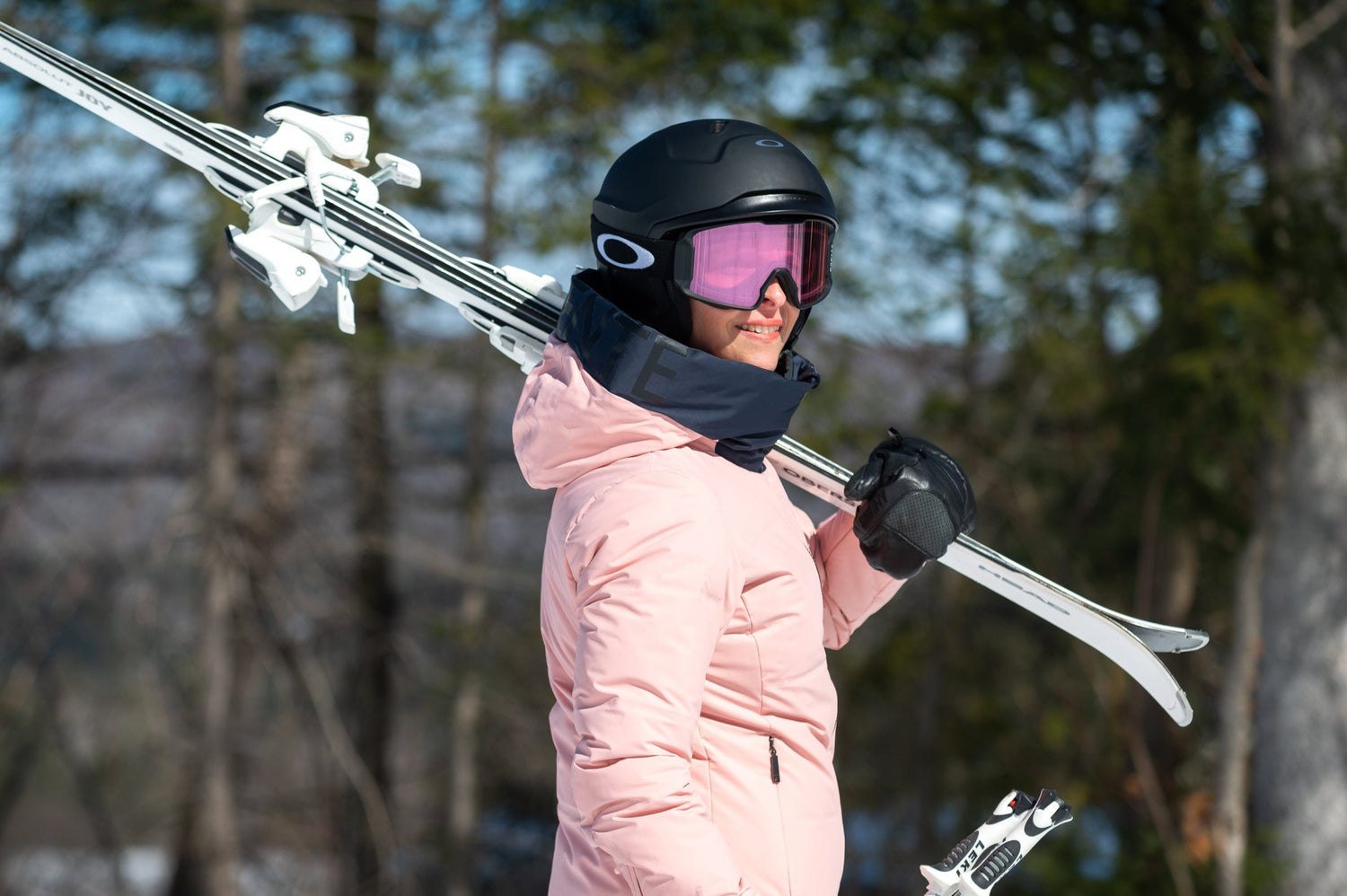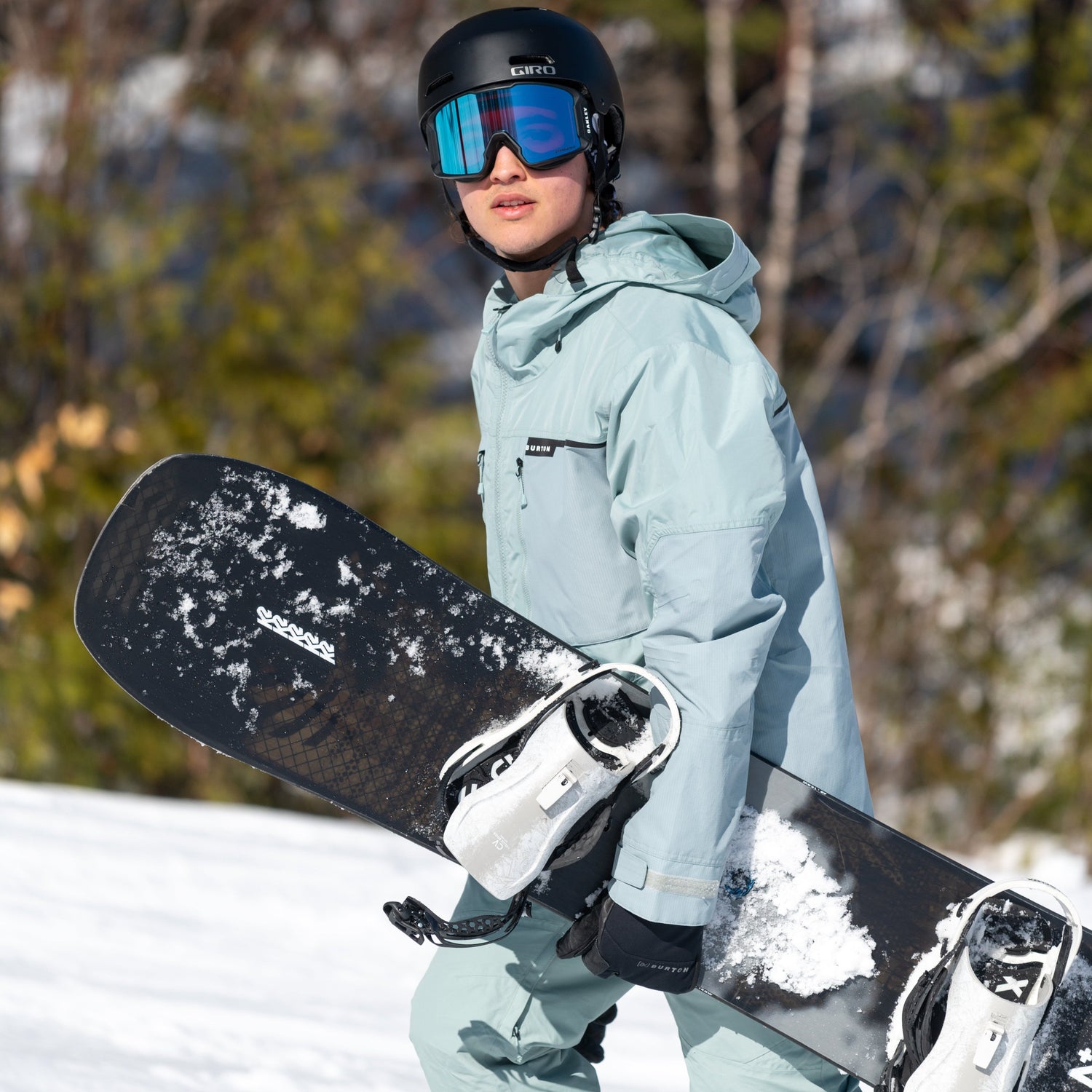1. Why should you always wear a bike helmet?
Your heart pounds on an adrenaline-soaked, technical downhill. You push your limits on the open road. Your daily commute is a peaceful spin on a bike path. No matter what kind of biking you do, there is always some risk.
Even though bike helmets aren’t required by law—except on electric bikes—it goes without saying that they’re essential for your safety. A helmet absorbs blows and distributes the impact over a larger area if you crash. No matter which model suits your type of riding, the size, certifications and comfort are important aspects to consider when buying a helmet.

2. How do you know what size bike helmet you need?
Size is one of the most important aspects. When trying on a bike helmet (for both kids and adults), it should be centred to cover the top of your forehead and back of your head. Make sure the straps form a Y under your earlobes.
Then fit it to your head using the adjustment system, which is usually placed at the back, and close the buckle on the chin strap. The helmet should fit snuggly. Make sure there isn’t space between your head and shell’s lining. If you can fit one finger between your chin and the chin strap buckle, the helmet has been properly adjusted. That’s where comfort comes into play.
You shouldn’t feel pressure points, and the helmet should stay in place when you move your head. In addition, consider the helmet’s weight when you’re wearing it. For the most comfort based on the kind of riding you do, you should also think about helmet ventilation.

3. What are MIPS® certifications and technology?
A bicycle helmet must meet certain safety standards. It’s important to check the helmet’s certification. This ensures that the helmet performs well during crashes. Make sure that the helmet you choose is approved by one of the organizations specializing in the field: CSA, CPSC, ASTM, CEN or SNELL.
In addition to these standards, MIPS® technology enhances protection during crashes. It’s designed to protect you during rotational movements of the head caused by certain kinds of impacts. It’s easy to spot on a helmet thanks to the circular yellow logo found on the back of the shell. Although MIPS® technology is regularly used by many brands, some companies have developed their own technology, such as POC’s SPIN.
To learn more about MIPS® technology, check out our article Discover MIPS helmet technology.

4. How do you choose the right type of bike helmet?
Bike helmets for women
Some models are designed specifically for women’s morphology. However, most bicycle helmets are unisex.
Mountain bike helmets
Mountain bike helmets have more ventilation because of the sport’s higher intensity level. They also have a visor that provides protection against sunlight and crashes.
Full face mountain bike helmet
Riders seeking thrills in the mountains often choose a full face helmet with a chin bar. Full face mountain bike helmets provide superior protection against crashes. They are designed for downhill and bike park riding.

Road bike helmets
Road bike enthusiasts should choose lighter, better ventilated, more aerodynamically shaped models.
Urban bike helmets
Urban/recreational helmets work best for cyclists who prefer outings on hybrid bikes. They don’t have as much ventilation, but they’re very comfortable.
Gravel bike
For gravel biking, you can wear a road bike helmet. However, there are models designed for gravel biking that have a shorter, more aerodynamic visor than those on mountain bike helmets. The brand-new Aro3 model at Oakley is a great example.

Electric bike
A bike helmet is required by law on an electric bike. Choose your helmet based on the type of bike you ride.
If you want to learn everything you need to know about electric bikes, check out our Buying Guide.
5. When do you need to change your bike helmet?
Remember, like all sports equipment, a helmet has a lifespan. Depending on its use, your helmet should last 4 to 5 years. However, experts recommend discarding it after an impact. Even if there isn’t visible damage, it could lose some of its effectiveness in protecting your head during a fall.
When biking season is over, don’t forget to store your helmet away from sunlight to extend its lifespan.




